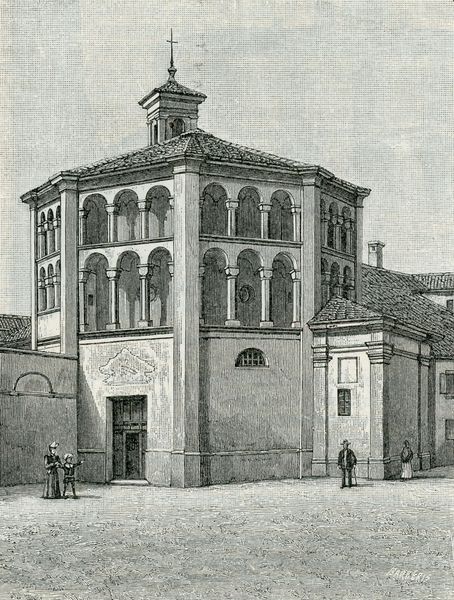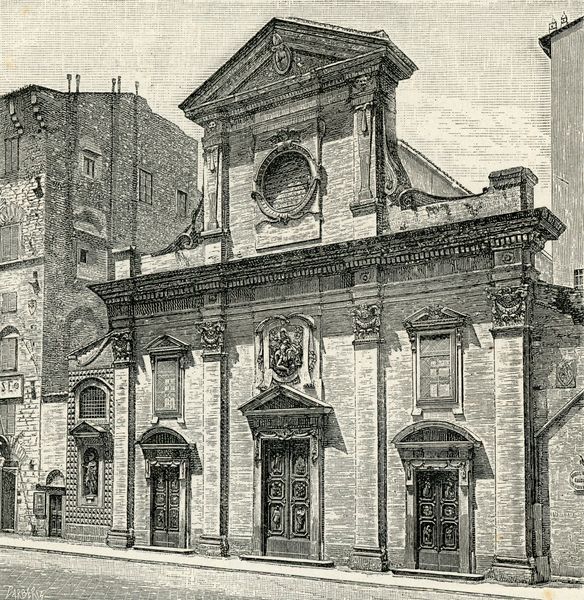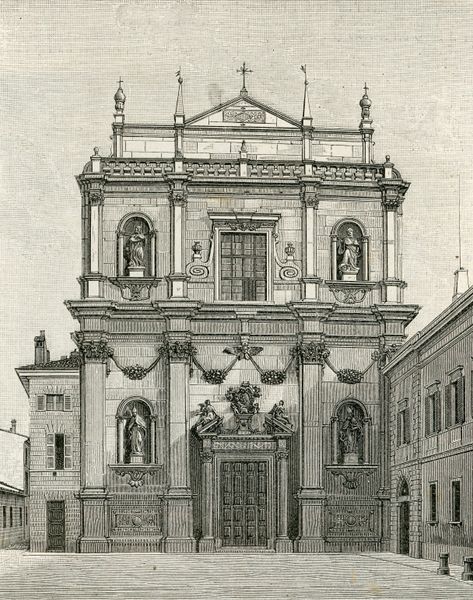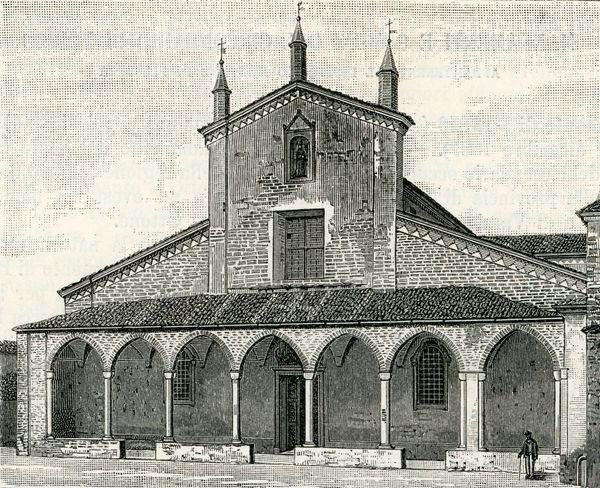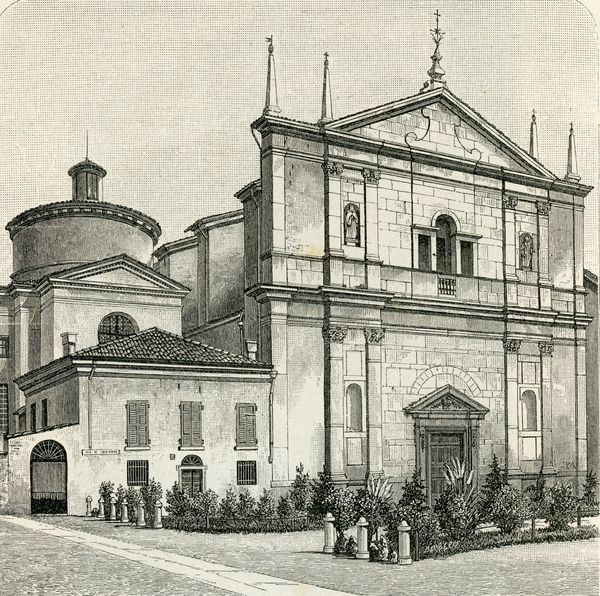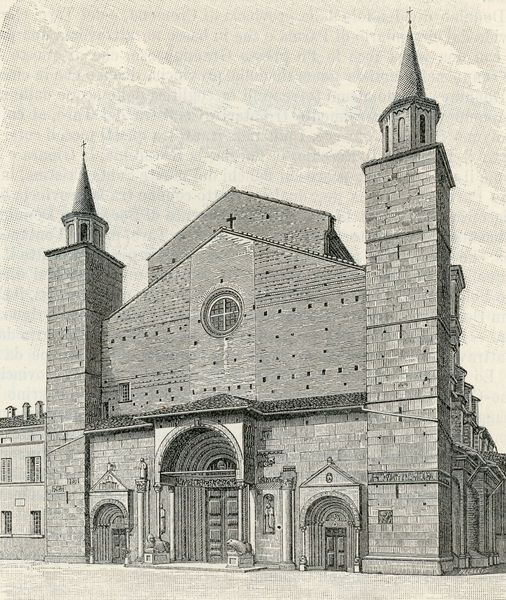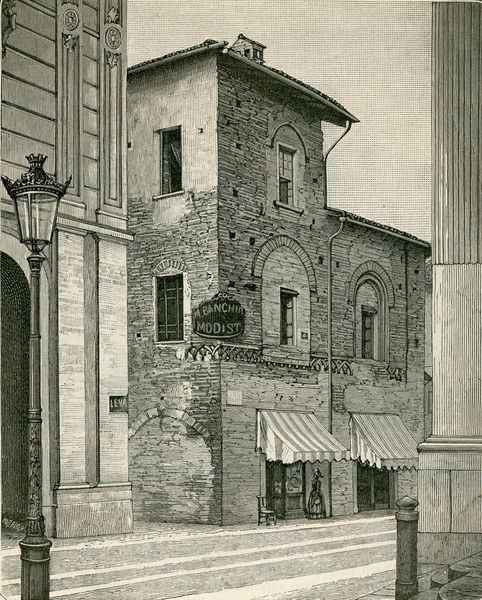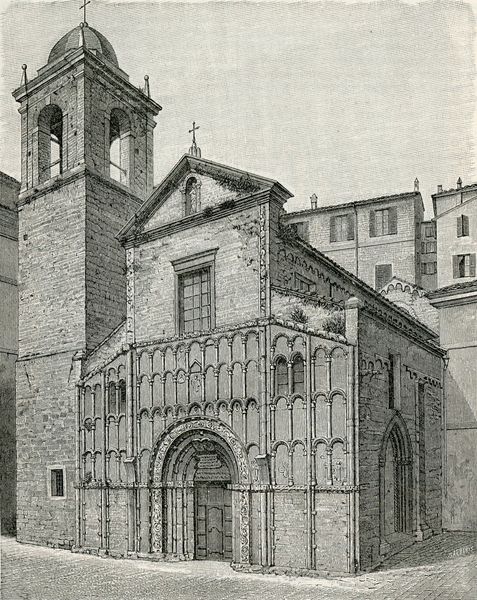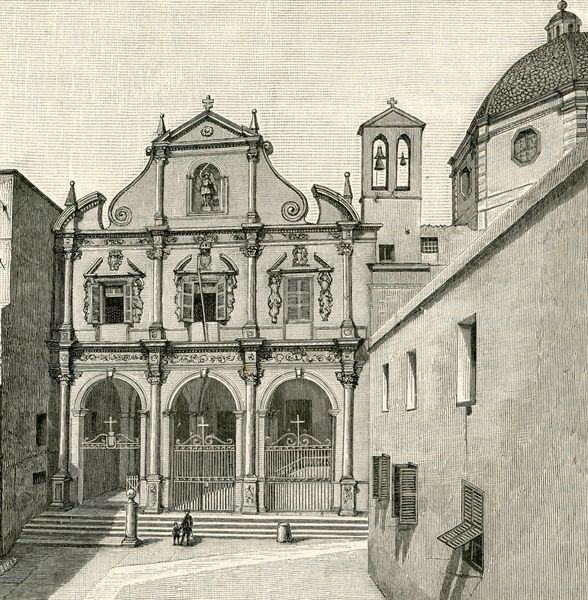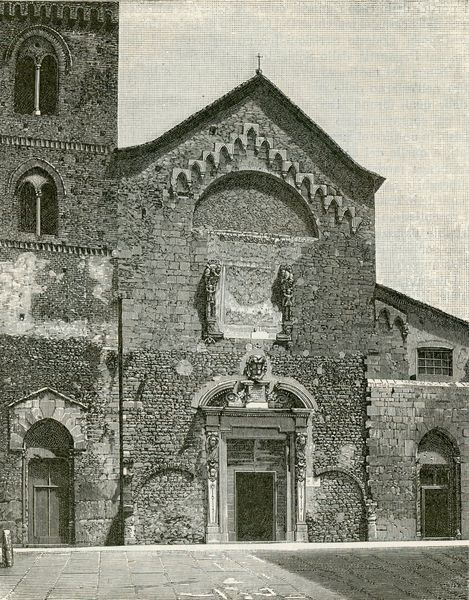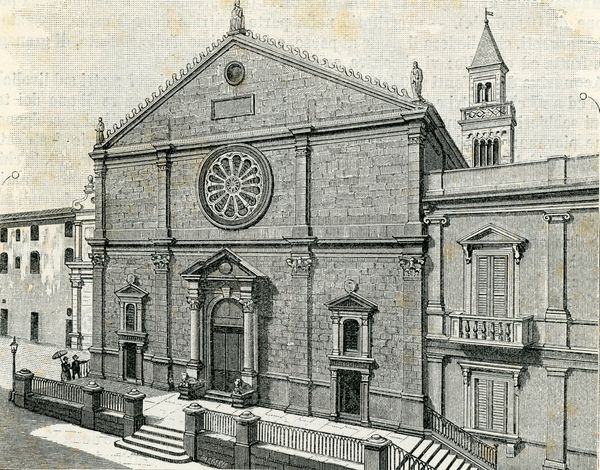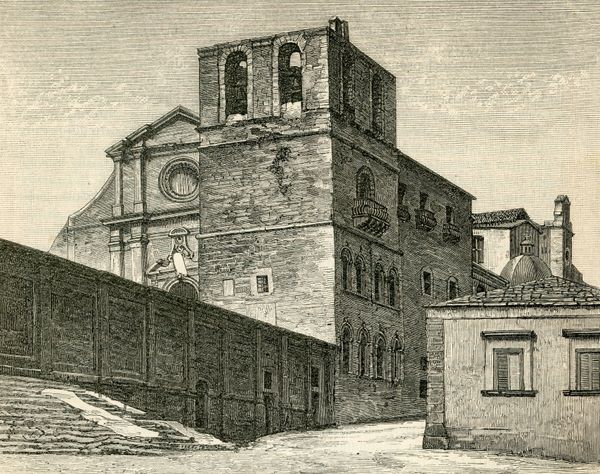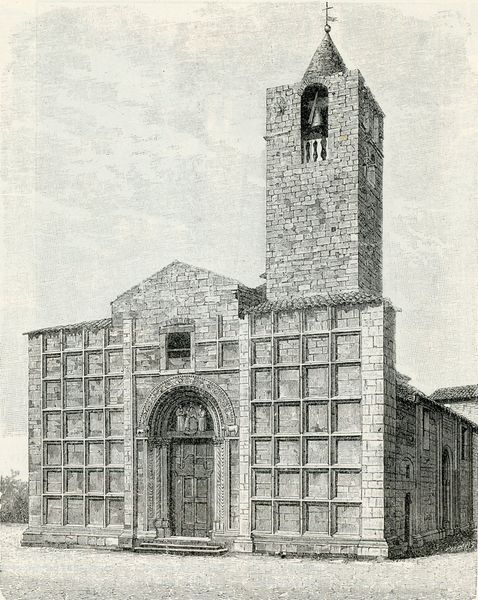
Copyright: Public domain
Curator: Here we have Giuseppe Barberis's "Chiesa Di San Lorenzo" from 1890, rendered with pen and drawing techniques. What’s your initial reaction? Editor: The intricacy! I am immediately struck by the detailed craftsmanship. You can almost feel the rough texture of the stone beneath your fingertips. There is something almost austere about the labor involved. Curator: That roughness reflects its historical context. This neoclassical architectural landscape reflects not just an aesthetic but a societal yearning. Post-revolutionary Europe craved order and stability and architecture mirrored those aspirations. Editor: I can see that manifested in the materials, too. Stone construction speaks of permanence, labor intensive. The ornamentation feels very deliberately, strategically placed too, given the weight of those stone materials. Curator: Precisely. But look at what’s represented: it's not simply about erecting walls but invoking a powerful, religious institution in people's minds. And the statues. What roles did labor play for them? The male sculptors and models versus what those idealized objects represent for women? It evokes these issues, to me. Editor: Yes! This rendering reminds me of craftspeople who built the Duomo, they believed labor could create works for their guilds or even God to bring the sacred closer to everyone in daily life. We should not overlook the consumption process; what were these spaces ultimately created and used for? The materials reflect the social values that reinforced the spiritual purpose and community function. Curator: That's insightful. When viewing works like these, it is crucial that we keep in mind that "high art" has always been interwoven within socio-economic tapestries of labor. Power, religion, social values...these were and still are, never far away. Editor: Right. Studying the artwork via means of production as much as we do history encourages a different level of connection. Curator: Indeed. These details become a bridge, linking the grand facade to our contemporary moment and critical inquiry. Editor: I walk away understanding that even the static facades represent a very active space where culture gets literally shaped from the ground up.
Comments
No comments
Be the first to comment and join the conversation on the ultimate creative platform.
